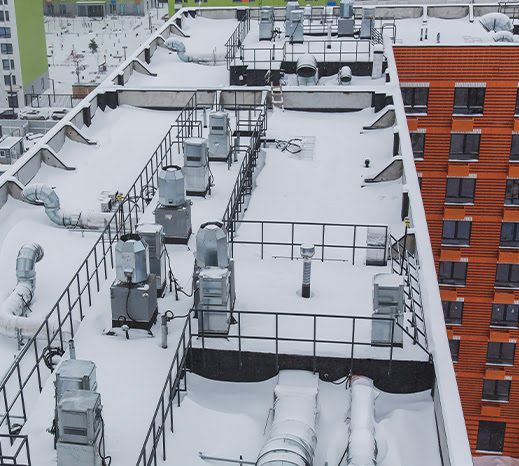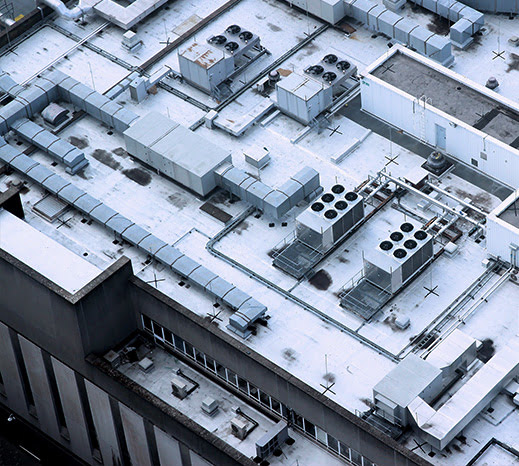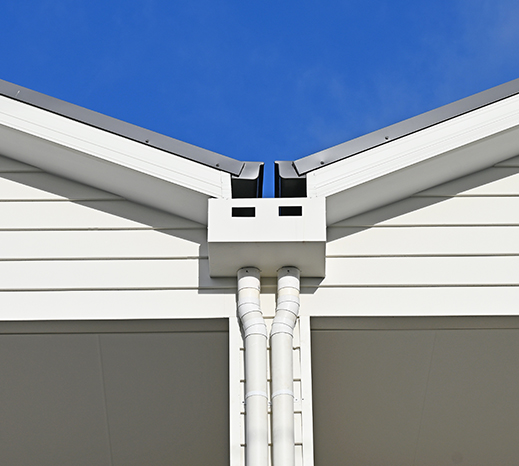The Tidewater Roofing team has decades of experience assessing wind damage to commercial roofs and providing effective repairs—here’s our list of tips on how to identify and address wind damage as soon as it occurs.
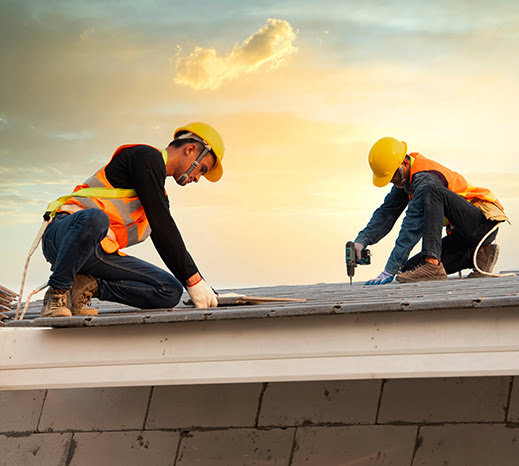
When the wind howls outside, it’s not just the trees and power lines at risk—your commercial roofing system is also under siege. High winds can wreak havoc on commercial roofs, resulting in costly damages that can compromise the safety and longevity of your building.
Tidewater Roofing has more than 40 years of providing commercial roof repair services to Hampton, VA, so we know all about how to deal with wind damage. Below, you’ll find our insights and solutions for commercial property owners on how to manage wind damage effectively.
Table of Contents
- Understanding Wind Impact on Commercial Roofing Materials
- Signs and Symptoms of Wind Damage
- Immediate Actions to Take After Discovering Wind Damage
- Importance of Professional Inspections
- Temporary vs Permanent Repair Solutions
- Preventative Measures
- Cost Implications of Neglect
- Recommendations for Commercial Property Owners
- Frequently Asked Questions
Understanding Wind Impact on Commercial Roofing Materials
Wind can have varying effects on commercial rooftops depending on the type of roofing materials used. Here’s how:
- Asphalt Shingles: Vulnerable to wind uplift, they may tear or break off.
- Metal Roofing: Seams can loosen, leading to water penetration.
- Flat Roofs: Wind can cause “billowing” or “tenting” of the membrane.
Roofing materials of any kind can also be punctured or shattered by impacts that occur when wind blows debris onto the rooftop. This kind of damage should be considered severe and addressed immediately.
See Also: How to Choose the Right Metal Roofing For Your Business
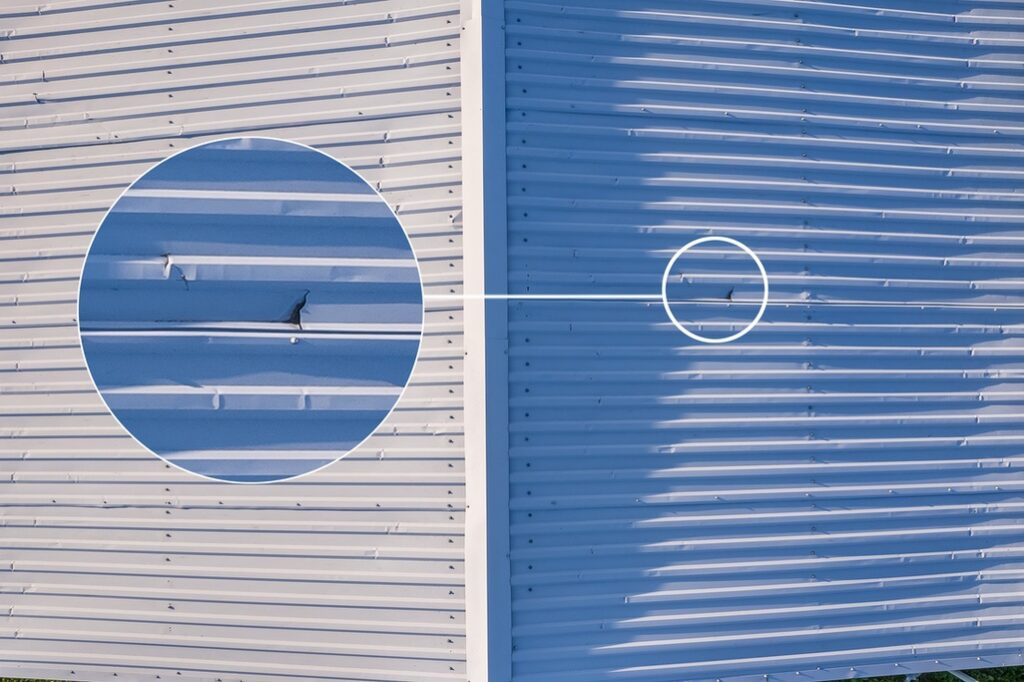
Wind Speed vs. Damage
- 40-50 mph: Can cause minor damages.
- 50-70 mph: More severe damage.
- Above 70 mph: May create risk of total roof failure.
Signs and Symptoms of Wind Damage
Post-storm, look for these indicators that wind has caused damage to your roof:
- Wrinkles or bubbles on the surface.
- Missing shingles or sheeting.
- Rotting of underlying wood.
- Damage to flashing or fascia.
- Loss of granules or gravel, a sign of wind scouring.
See Also: 10 Common Types of Damage Found on Virginia Roofs
What to Do After Discovering Wind Damage
- Document Damage: Take photos for insurance claims.
- Temporary Fixes: Use tarpaulins to cover exposed areas.
- Contact Professionals: Reach out to Tidewater Roofing for immediate assessment.
While DIY inspections are important, they can miss critical details and are not a substitute for calling our professionals. Our contractors are fully licensed and insured, use specialized equipment, and can assess the structural integrity of your roof to make sure it is safe to continue living under while repairs are completed. We’ll also be able to provide an accurate estimate for the costs of any repairs you need.
Temporary vs Permanent Repair Solutions
Temporary
- Tarp Coverings: A quick and cost-effective solution, tarp coverings are used to temporarily protect exposed or damaged areas of a roof against water infiltration and further weather-related damage.
- Sealant Applications: Specialized roof sealants can be applied to small cracks or leaks as a stop-gap measure, providing a water-tight seal until more permanent repairs can be made.
Permanent
- Replacement of Damaged Shingles or Panels: This involves removing the damaged roofing elements and installing new ones to restore the roof’s integrity. It’s a long-lasting solution that addresses the root cause of the damage.
- Structural Repairs: Wind damage can sometimes affect the roof’s underlying structure, requiring beams, joists, or trusses to be repaired or replaced. Structural repairs are comprehensive solutions that ensure the roof is both functional and safe for the long term.
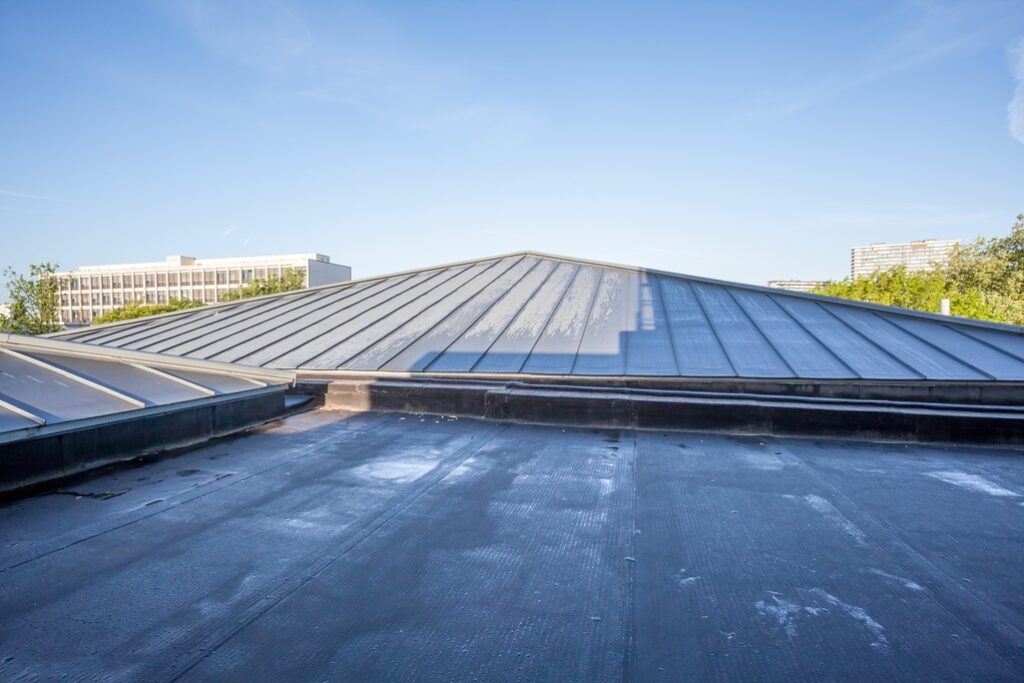
Preventative Measures
- Regular Maintenance Checks: Consistent and routine inspections can identify potential vulnerabilities or early signs of wear and tear, allowing for timely interventions that prolong the roof’s lifespan and prevent costly future damages.
- Wind-Resistant Materials: These are specially designed roofing materials that have higher resistance to wind uplift and penetration. Using these materials in the construction or renovation of your roof can significantly reduce the risk of wind-related damage.
- Reinforced Flashing: Flashing is used to seal and protect the joints and edges of the roof from water penetration. When reinforced, it adds an extra layer of protection against strong winds and storms, making it less likely that your roof will suffer leaks or structural damage.
Why Repairing Right Away Is the Right Way to Go
When it comes to the roof that protects your business, there’s no such thing as “a little damage”. Even seemingly minor issues can escalate if they aren’t addressed quickly—you might end up needing a total roof replacement for a problem that could have been much more affordable to fix if addressed earlier.
Neglecting damage to your roof or pushing back small repair jobs can also lead to the structural integrity of your building being compromised. In turn, this can create legal liabilities and put the business you’ve worked hard to build at risk.
How to Be Proactive About Commercial Roof Repairs
Instead of risking the above, we recommend taking the following steps to make sure any issues with your commercial roof are quickly discovered and dealt-with:
- Schedule bi-annual inspections.
- Invest in durable, wind-resistant materials.
- Have an emergency response plan in place.
For help repairing or replacing your roof, contact our experts at Tidewater Roofing. We’ll be happy to provide an accurate estimate for any work you need done so that you can keep having total faith in your commercial roof’s ability to protect your business.
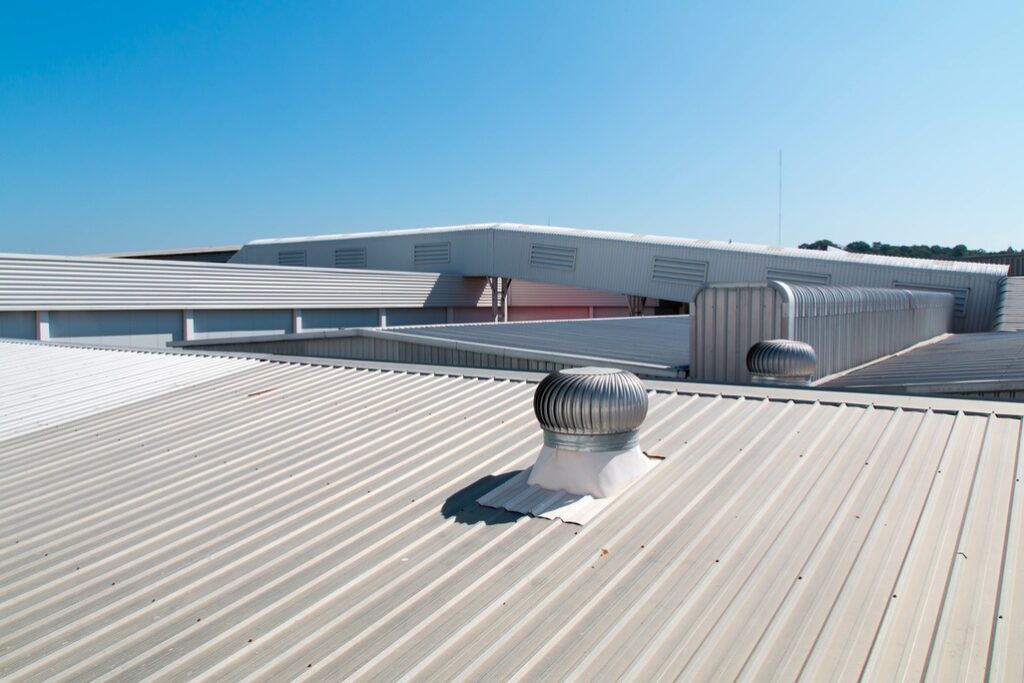
Frequently Asked Questions about Wind Damage to Commercial Roofing
How often should I inspect my roof?
At least twice a year and after major storms, or whenever else you suspect that your roof may have been damaged.
Can I perform a DIY inspection?
It’s easy enough to perform a basic visual inspection of your roof from street level, but we do not recommend getting on your roof unless there is an easy way to access it or you have the right equipment (ladder, safety harnesses, gloves and appropriate clothing, tools) and know how to use it. It’s advisable to consult our professionals for a thorough assessment if you suspect your roof has been damaged.
What is the lifespan of a commercial roof?
Most commercial roofing systems last 15-30 years depending on materials and maintenance.
How soon should I repair wind damage?
Wind damage should always be assessed and addressed immediately in order to prevent further damage. Remember, when it comes to wind damage, prevention is better than cure. Regular inspections and timely repairs can save you not only money but also prevent the safety risks that come with a damaged roof.
What is the best roof shape for high winds?
The best commercial roof shape to withstand high winds is generally a sloped or “pitched” roof. Here’s why:
- Aerodynamic Efficiency: The slope of the roof allows wind to glide over the surface rather than push against it, reducing the risk of “uplift” that can peel roofing materials away.
- Water Runoff: Sloped roofs are also better at preventing water accumulation, which can be a concern during storms that bring both high winds and heavy rains.
Flat roofs can be more susceptible to damage from wind uplift pressures because they offer more resistance to flowing air. But remember, the effectiveness of a sloped roof in high-wind conditions also depends on the quality of construction and materials used. Consult with our team at Tidewater Roofing to determine the best roofing solution for your specific needs.

